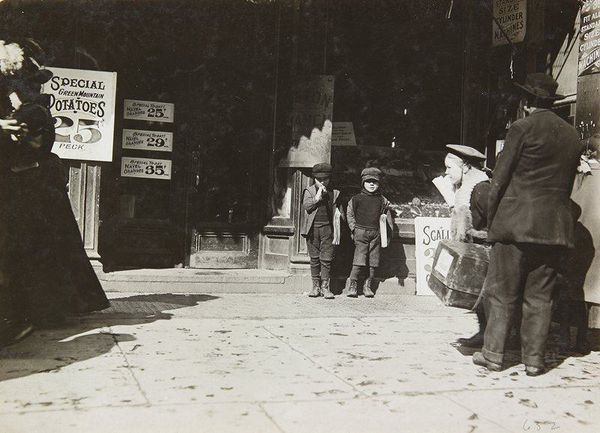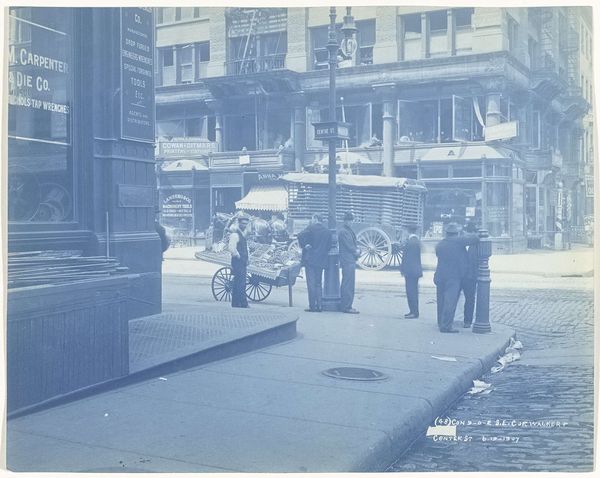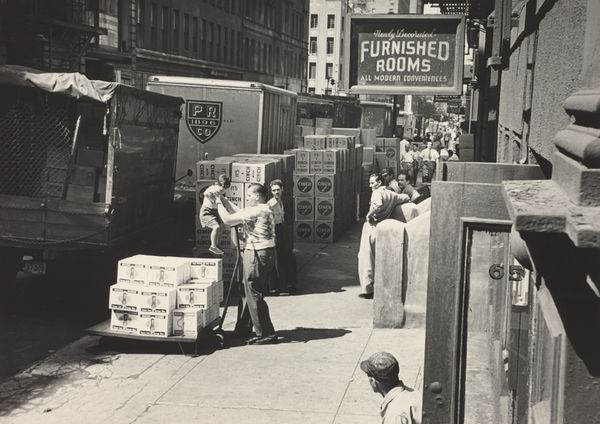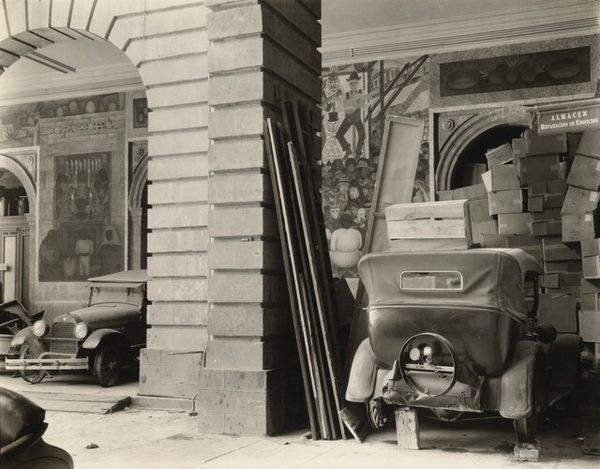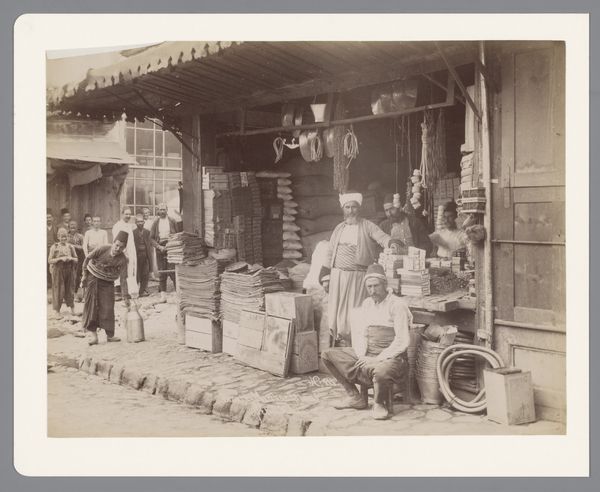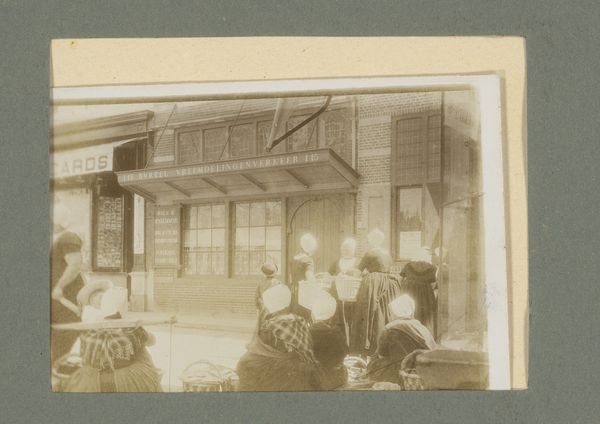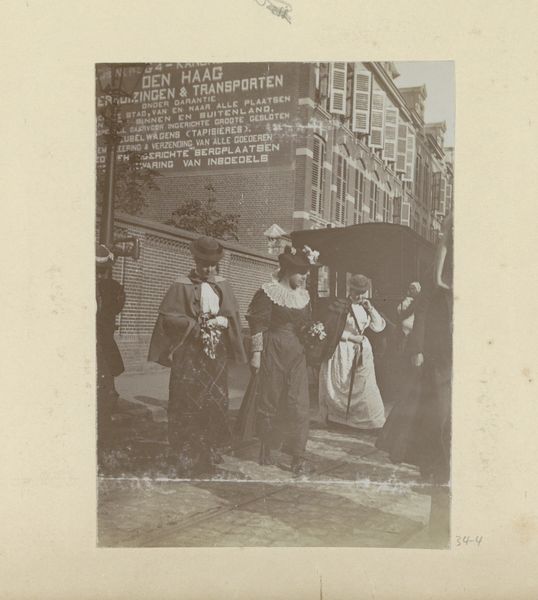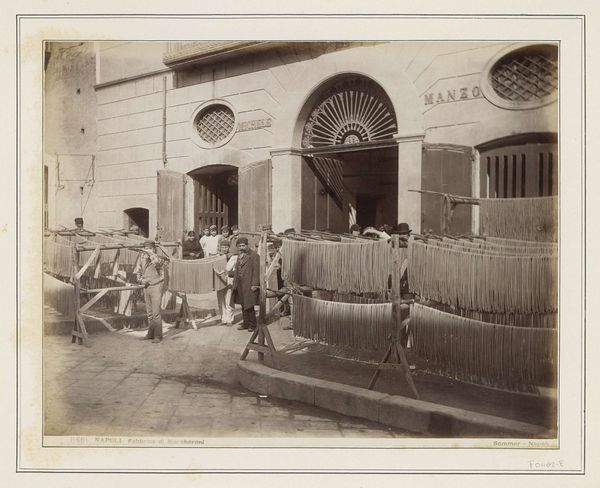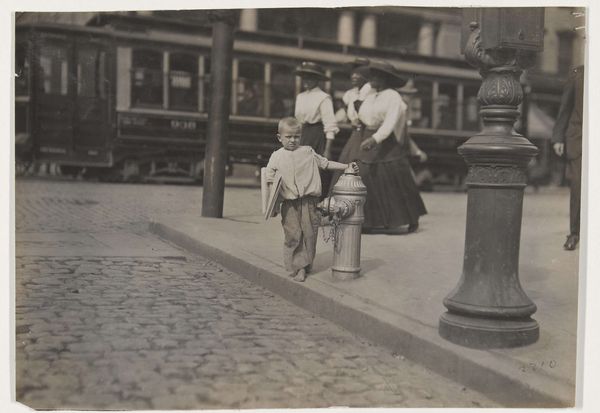
Lena Lochiavo - 11 years old, basket (and pretzel) seller, at Sixth Street Market in front of saloon entrance, Cincinnati, Ohio 1908
0:00
0:00
photography
#
portrait
#
17_20th-century
#
social-realism
#
street-photography
#
photography
#
historical photography
#
monochrome photography
#
ashcan-school
#
realism
#
monochrome
Dimensions: sheet: 17.7 × 11.8 cm (6 15/16 × 4 5/8 in.) image: 16.9 × 11.8 cm (6 5/8 × 4 5/8 in.)
Copyright: National Gallery of Art: CC0 1.0
Editor: This photograph, taken in 1908 by Lewis Hine, is titled "Lena Lochiavo - 11 years old, basket (and pretzel) seller, at Sixth Street Market in front of saloon entrance, Cincinnati, Ohio." There’s a sense of both hope and hardship captured in her gaze, juxtaposed against the backdrop of what looks like a bustling market. How do you read this piece, considering the historical context? Curator: Hine’s work often serves as a powerful indictment of social conditions. By explicitly documenting Lena’s age and her work, and positioning her beside a saloon, Hine highlights the precariousness of childhood within specific social and economic environments. Consider the choices inherent in the composition; the framing suggests the saloon’s potential influence, the baskets hint at a family in need. It encourages us to question the norms that allow such precarity to exist. Do you think the photograph is meant simply to record or to actively provoke change? Editor: It feels like a direct appeal. It is not a detached observation, it’s advocating for something. Perhaps to elicit public condemnation. Did Hine’s work succeed at changing attitudes toward child labor? Curator: Absolutely, Hine's photographs were instrumental in shaping public opinion and influencing legislation aimed at protecting children. The National Child Labor Committee employed these images precisely for that purpose. Think of Hine as consciously crafting and using photos for a particular socio-political outcome. By focusing on individuals within larger societal systems, his images fostered empathy and revealed the human cost of industrial progress, contributing significantly to the Progressive Era reforms. It wasn’t merely art for art's sake, but rather art as a tool for social change. Editor: That gives me a different perspective on the agency of art in social discourse. I see the photographer as a powerful agent now. Curator: Exactly. Understanding the historical function, intent, and the audience for images is critical for deciphering its total meaning. There is always a sender, a receiver, and a method of communication at play. Hine clearly shows how social change can emerge via photographs.
Comments
No comments
Be the first to comment and join the conversation on the ultimate creative platform.

